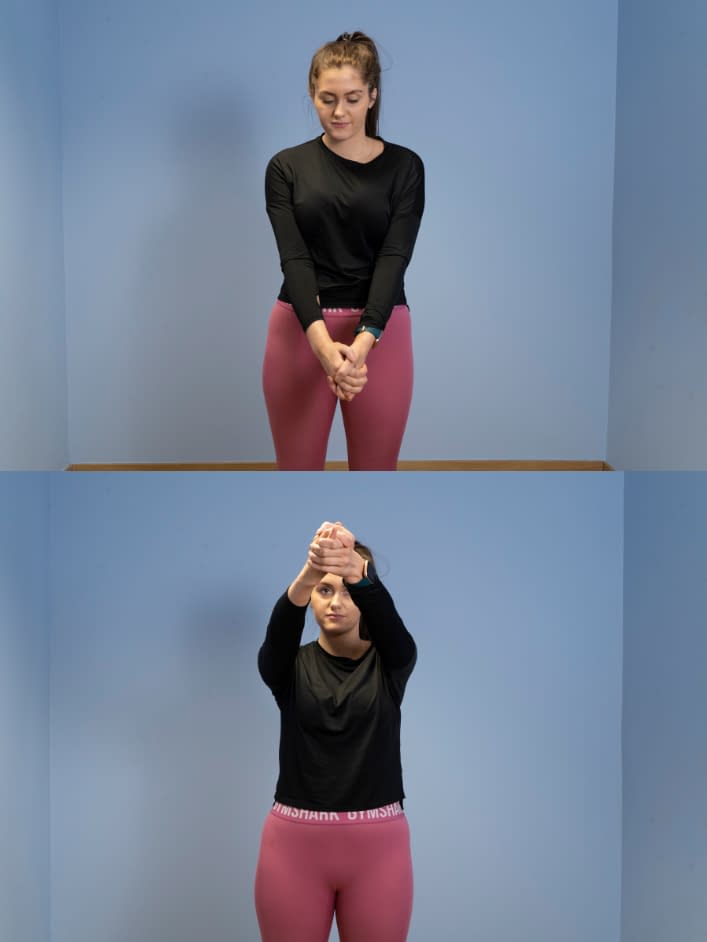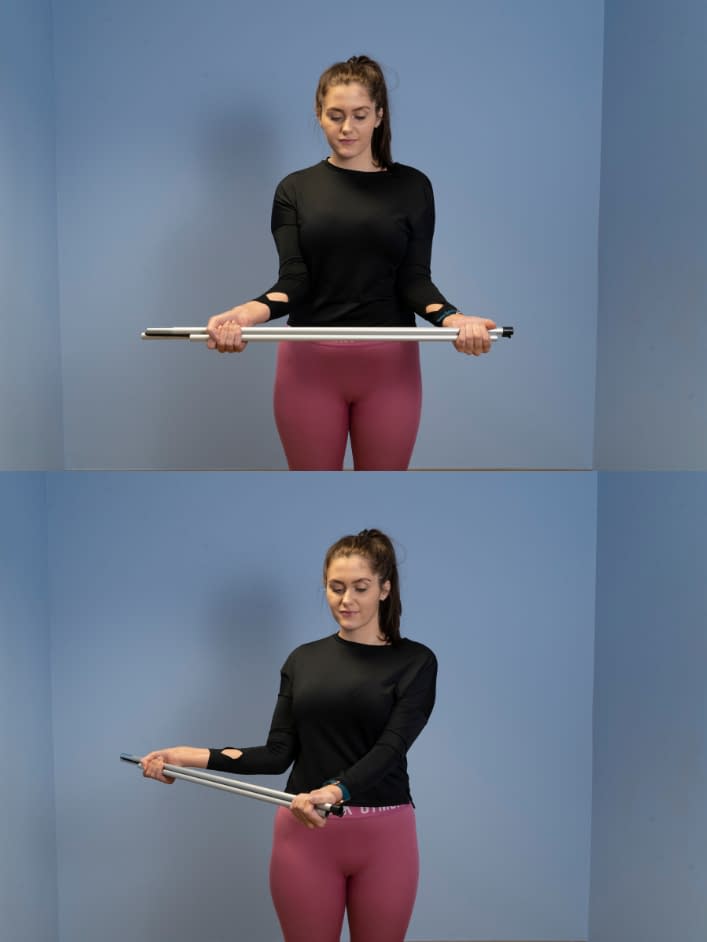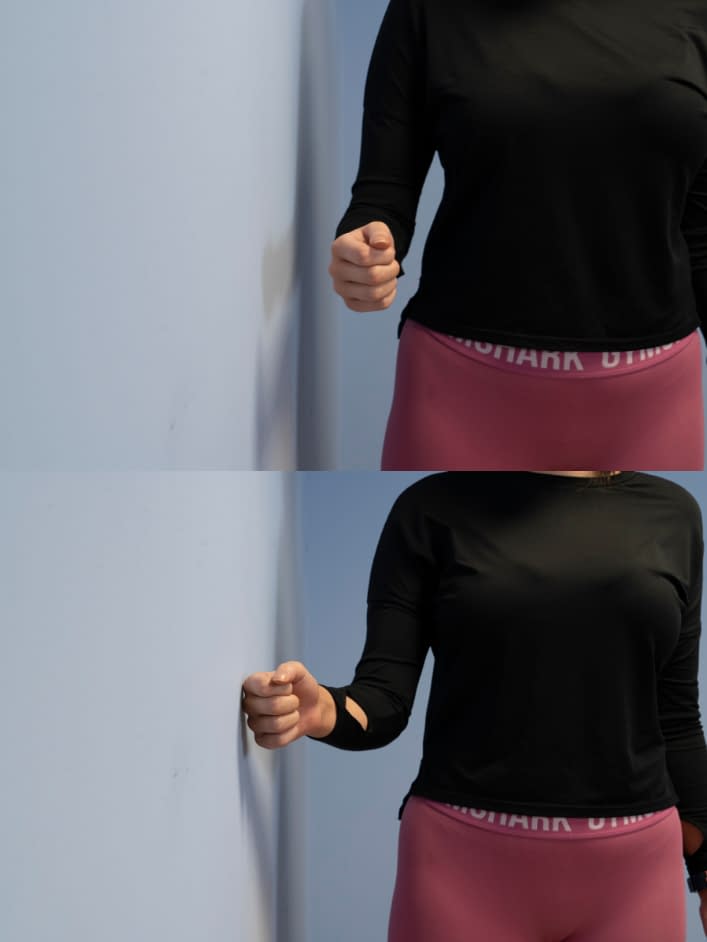Shoulder Osteoarthritis (OA) Early Exercise Programme
Aim to perform this programme a minimum of once per day unless prescribed otherwise. As with any new exercise, start slowly (repetitions as able) and build up as you are able within the guidelines below.
Pain should not exceed 4/10 whilst completing this exercise programme.
1. Assisted shoulder elevation
- In sitting or standing, clasp your hands together with your arms straight.
- Keeping your hands clasped, use your non injured arm to help lift your injured arm above you.
- Stop when you get to the end of the movement.
- Lower your arms down in a controlled manner.
- If you struggle, introduce a stick to help you with the assisted movement.
2. Assisted shoulder external rotation
- In sitting or standing hold a pole or a stick shoulder width apart with both hands facing upwards.
- Bend both of your elbows to 90 degrees (about halfway).
- Keep your elbow on the injured side tucked into your body.
- Without moving your elbow away from your body, use the non-injured side to rotate your injured shoulder outward.
- Stop when you get to the end of the movement or if your pain reaches 4/10.
- Return to starting position in a controlled manner.
3. Isometric shoulder external rotation
- Sit or stand with your injured shoulder facing a wall.
- Bend your elbow to a right angle so your forearm is level to the floor.
- Keeping your elbow bent, place the back of your hand against the wall.
- Apply moderate pressure against the wall by rotating the upper arm to push the back of your hand into the wall (not the entire forearm).
We recommend consulting a musculoskeletal physiotherapist to ensure exercises are best suited to your recovery. If you are carrying out an exercise regime without consulting a healthcare professional, you do so at your own risk. If you have any concerns whilst completing these exercises, please contact a healthcare professional.
More Plans
Here we aim to continue to increase movement but also introduce exercises to start to build the strength of the muscles around the shoulder. Pain should not exceed 4/10 on your self-perceived pain scale whilst completing this exercise programme.
- 0
- 1
- 2
- 3
- 4
- 5
- 6
- 7
- 8
- 910
This programme progresses the strength exercises from the last programme to further increase the strength and stability of the shoulder. Pain should not exceed 4/10 on your self-perceived pain scale whilst completing this exercise programme.
- 0
- 1
- 2
- 3
- 4
- 5
- 6
- 7
- 8
- 910


